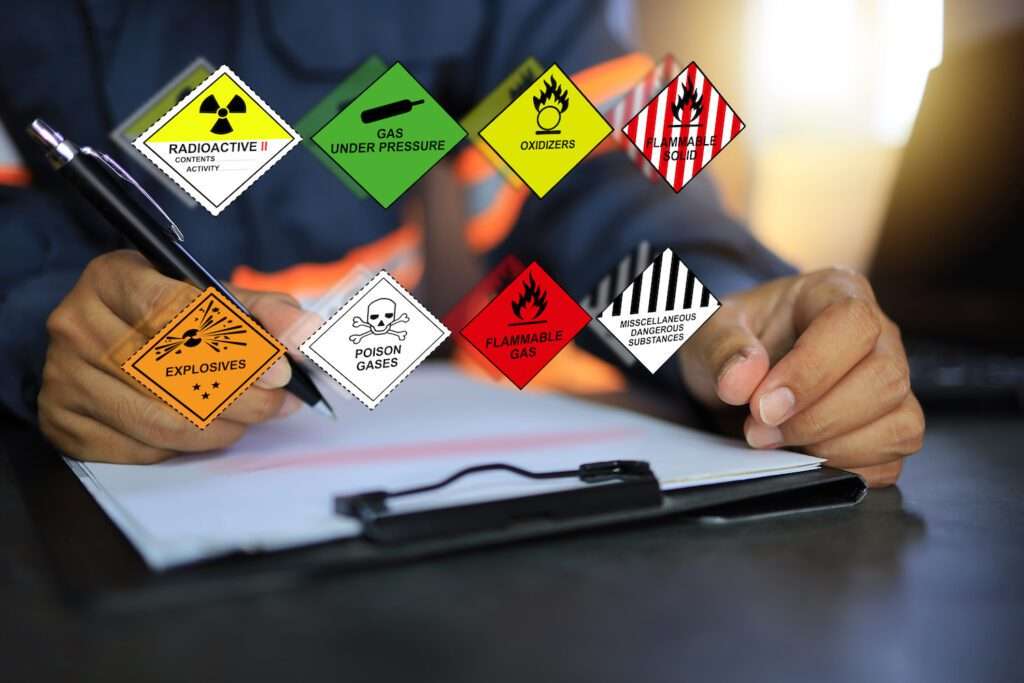In today’s complex industrial landscape, Personal Protective Equipment (PPE) is far more than just a box of gloves or safety goggles – it’s a critical line of defense against chemical hazards, workplace injuries, and costly compliance violations. Yet, selecting and managing the right PPE isn’t guesswork; it’s a data-driven process grounded in the detailed hazard information found in Safety Data Sheets (SDS).
For manufacturers, distributors, and safety managers, understanding how PPE and SDSs intersect isn’t just good practice – it’s essential to meeting OSHA requirements, protecting employees, and streamlining safety compliance. However, many organizations struggle to translate SDS hazard data into effective PPE protocols, often hampered by outdated or poorly managed SDS documentation.
This article dives into how PPE requirements are directly informed by SDS content, why precise SDS authoring matters for PPE compliance, and how leveraging modern SDS management tools can transform your safety program – making compliance easier and your workplace safer.
The Role of SDS in PPE Selection and Compliance
Safety Data Sheets are the authoritative source for chemical hazard information, and they play a crucial role in determining the appropriate PPE for chemicals. OSHA’s Hazard Communication Standard requires that SDSs include detailed guidance on protective measures, such as gloves, eye protection, respiratory equipment, and clothing needed to safely handle chemicals.
Accurate SDS authoring ensures that this PPE information is clear, specific, and compliant with regulations. Without precise hazard identification and PPE recommendations in the SDS, businesses risk under-protecting employees or facing regulatory penalties for non-compliance.
PPE in Manufacturing and Hazardous Materials Handling
Manufacturing and chemical handling environments present diverse hazards – from chemical splashes and inhalation risks to skin irritation and burns. Based on SDS data, common PPE used in these settings includes chemical-resistant gloves, face shields, respirators, and flame-resistant clothing.
Performing a PPE risk assessment starts with reviewing the SDS to understand the specific hazards associated with each chemical. This tailored approach ensures that the protective gear matches the risk level, minimizing exposure and injury.
SDS and PPE Training: Building a Safety Culture
Training is more than a regulatory checkbox – it’s how organizations embed safety into their daily operations. When employees are trained to read and understand SDSs, they’re better equipped to use PPE correctly and consistently.
Well-authored, up-to-date SDSs serve as a foundation for effective training by offering clear, standardized information on chemical hazards and the PPE required to mitigate them. This alignment between SDS content and training outcomes helps reduce confusion, human error, and accidents.
Key elements of an effective SDS-based PPE training program include:
- Interpreting Section 8 of the SDS – Understanding the “Exposure Controls / Personal Protection” section that outlines specific PPE recommendations.
- Hazard recognition – Teaching employees how to identify key hazard statements, precautionary statements, and pictograms tied to PPE use.
- Contextual application – Training workers on when and where PPE is required based on real job tasks, not just theoretical exposure.
- Accessibility and reinforcement – Ensuring SDSs are readily available to all employees and revisited regularly as part of ongoing safety refreshers.
When PPE expectations are consistently reinforced through SDS-based training, organizations benefit from:
- Fewer workplace injuries and incidents
- Improved OSHA compliance
- Stronger employee confidence and engagement
- A more proactive safety culture
Ensuring PPE Documentation Compliance
PPE compliance doesn’t stop at training – it must be supported with proper documentation. OSHA and other regulatory bodies require that businesses maintain verifiable records of chemical hazards, PPE protocols, and the rationale behind them.
Safety Data Sheets play a vital role in PPE documentation by:
- Demonstrating hazard analysis – Showing that a facility has identified specific risks and taken steps to address them.
- Providing written justification for PPE use – Linking protective measures directly to chemical characteristics and exposure risks.
- Supporting audits and inspections – Serving as supporting documentation during compliance checks by OSHA or third-party assessors.
Documentation pitfalls to avoid:
- Inconsistent SDS formats – Makes it harder to locate PPE information across chemicals.
- Outdated SDSs – May recommend incorrect or insufficient PPE based on newer hazard data.
- Decentralized documentation – Creates gaps in version control and access, especially across multiple sites or teams.
To address these challenges, many organizations turn to SDS solutions like TotalSDS Author, which can:
- Centralize and standardize SDS content
- Ensure PPE guidance is current and accurately tied to chemical data
- Simplify version control, access, and audit readiness across the organization
Well-maintained documentation ensures PPE protocols are not only followed—but fully defensible during inspections, legal inquiries, or post-incident reviews.
How Automated SDS Management Enhances PPE Compliance
SDS authoring and management software, such as TotalSDS Author, offers a streamlined solution for maintaining accurate and up-to-date PPE information within SDSs. Automated systems help ensure consistent formatting, timely regulatory updates, and easy access to critical safety data.
By centralizing SDS management, companies reduce human error, speed up compliance workflows, and make PPE requirements readily available to all relevant personnel – empowering safer decision-making on the floor and during emergencies.
Strengthening PPE and SDS Compliance with the Right Tools
PPE and SDSs are inseparable components of an effective workplace safety and compliance program. By using accurate, well-structured Safety Data Sheets to guide PPE selection and training, businesses can protect their teams, reduce risk, and maintain compliance with OSHA and chemical safety regulations.
Modern solutions like TotalSDS Author make it easier to manage and update SDSs, ensuring that PPE recommendations are always current, accessible, and audit-ready.
Ready to improve your PPE and SDS compliance strategy? Schedule a TotalSDS Author Demo and learn how this tool can help you streamline SDS authoring, reduce errors, and ensure your safety protocols are aligned with regulatory expectations.


